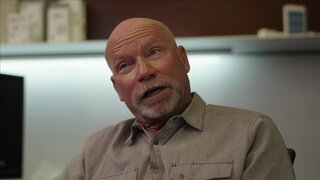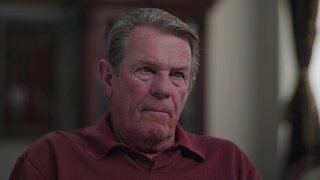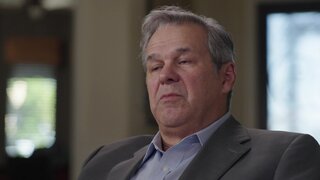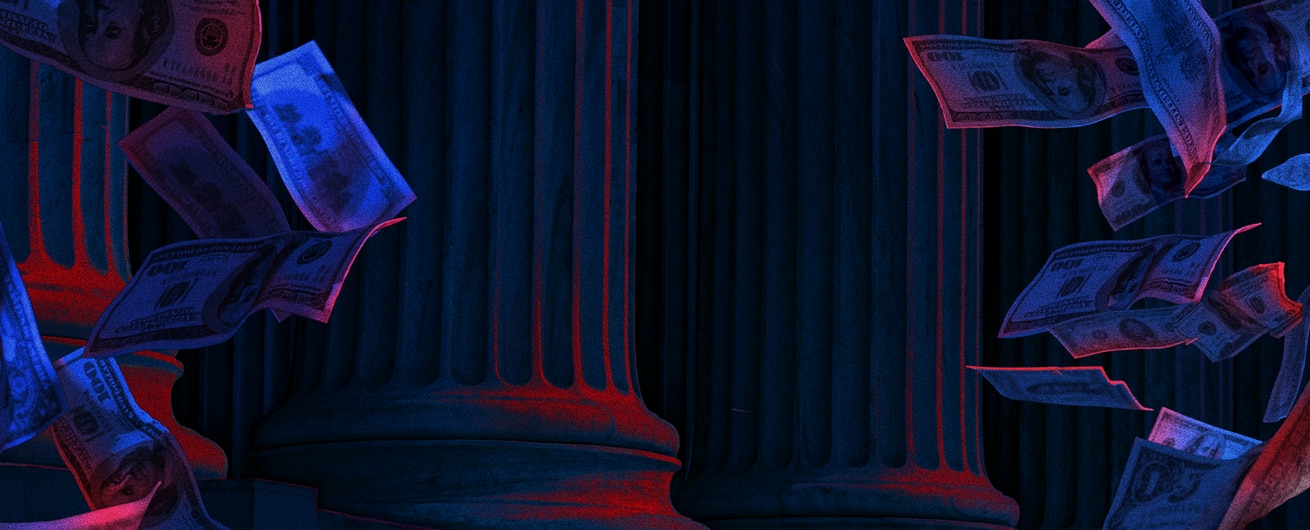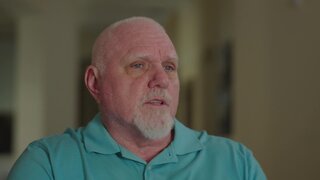Create a free profile to get unlimited access to exclusive videos, breaking news, sweepstakes, and more!
A Casino Tycoon's Purported Drug OD Takes Murder Investigators On A Treasure Hunt
Two overturned murder convictions still leave many wondering if Las Vegas casino heir Ted Binion died of an accident, suicide, or homicide.
Law enforcement agencies and loved ones remain divided over whether a wealthy Las Vegas heir was the victim of homicide and greed.
On Sept. 17, 1998, officers with the Las Vegas Metropolitan Police Department (LVMPD) were dispatched to a Palomino Lane residence after a woman named Sandra “Sandy” Murphy said her purported husband wasn’t breathing. When paramedics arrived, 55-year-old Ted Binion was dead on the floor, atop a sleeping bag with a blanket over his body. A nearby bottle of Xanax and foam at the victim’s mouth indicated signs of a fatal overdose.
“If we have a dead body in this neighborhood, you kind of know something’s up,” said now-retired LVMPD Det. Sgt. Jim Young in the season finale of Blood & Money.
RELATED: A City Goes On Lockdown When A Judge Is Shot Hours After A Domestic Violence Murder
Local law enforcement agents recognized the decedent as Ted Binion, the well-known brand ambassador for Binion’s Horseshoe Casino, founded by Binion’s father. At the time of his death, Ted Binion was worth about $55 million. But those closest to him knew Binion also possessed a wealth of vices, including a 20-year-plus addiction to heroin and other drugs and his frequent visits to local strip clubs.
That was where he met his girlfriend, 26-year-old Sandy Murphy, an adult entertainer who’d worked at the famous Cheetahs strip club. Murphy came into the picture in 1994, when Binion was still married to another woman with whom Binion shared a daughter, Bonnie Binion.
Although Binion’s scene of death had all indications pointing to a drug overdose, Det. Young teamed up with now-retired LVMPD Lt. Wayne Petersen because the victim was so well-known in the Vegas community.
“Certainly, Ted, with all his money, would be a real prize for Sandy Murphy,” said Petersen. “Ted had given her a Mercedes, gave her a credit card…”
“It was a time that partying went on day and night,” Las Vegas litigation specialist Mark Fierro told Blood & Money, adding Binion gave Murphy about $10,000 per month.
Investigators looked into allegations that Binion lived with depression, partly due to losing an appeal after the state gaming board stripped him of his license in 1994 following rumors of excessive drug use.
Though no longer generating income from the casino, and with managerial responsibilities being transferred to Binion’s sister, Becky Binion, Binion had still amassed a fortune with $8 million worth of silver bars. With some help, Binion had a vault constructed, designed to carry the silver and be buried in the desert land of Pahrump, Nevada.
Binion still kept quite a bit of silver in his home. However, just one day after Binion’s passing, it was missing. According to Det. Petersen, the silver was worth tens of thousands of dollars.
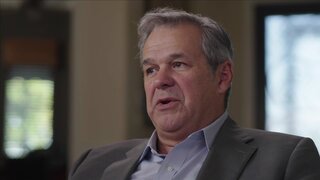
It was enough for Becky Binion to suspect there was more to her brother’s death than what had met the eye, especially since he reportedly looked forward to winning back his gaming license. Suspicions were soon cast onto Murphy, who’d allegedly convinced Binion to add her as a beneficiary in his will.
According to attorney and long-time friend James Brown, Binion agreed to leave Murphy his Palomino Lane home plus $300,000. Brown drafted the request himself, stating that the remainder of Binion’s estate would go to his daughter.
But just one night before Binion’s death, attorney Brown received an alarming phone call.
“He said, ‘Take Sandy out of the will… If she doesn’t kill me, if I’m dead, you’ll know what happened,’” Brown told Blood & Money. “It kind of sent chills in my spine.”
One day after Binion’s death, Murphy arrived at Binion’s home to collect items from the residence. Murphy’s lawyer agreed to videotape Murphy going from room to room, ensuring Murphy wouldn’t take anything that wasn’t rightfully hers. Footage showed Murphy rummaging through drawers and other hidden areas in the house, taking multiple items.
“In the video of Sandy going through the house, she did not seem to be grieving at all,” said Det. Petersen. “The circumstances and the suspicions were starting to mount.”
Suspicions only grew the next day, when the findings of the postmortem examination showed lethal amounts of morphine/heroin and the sedative Alprazolam (Xanax), as well as a lower dosage of Diazepam (Valium). What stood out to loved ones and investigators was that the lethal doses causing Binion’s death were concentrated in his stomach, proving he ingested the drugs instead of his routine method of smoking.
The Clark County Coroner’s Office left the manner of death open and undetermined.
RELATED: How Authorities Caught An Affluent Conman Wanted For Married Couple's 1985 Disappearance
On Sept. 19, 1998, Nye County Sheriff’s Office officials came upon three men digging in the Mohave desert of Pahrump, Nevada. It was a peculiar scene, since the digging occurred in the middle of the night, consisting of several large trucks, diggers, and bright lights.
One of the men, 33-year-old construction worker Rick Tabish, explained victim Ted Binion instructed him to collect the buried silver should anything bad happen to Binion. Tabish said he previously helped construct Binion’s vault and promised to give the treasure to Binion’s daughter.
All three men were arrested and charged with grand larceny. Tabish, however, was bailed out by Binion’s girlfriend, Sandy Murphy, while Nye County officials confiscated the silver.
Investigators soon found Murphy and Tabish were having an affair and had lived with one another in Henderson, Nevada, before and after Binion’s death. Following Binion’s passing, the pair booked a getaway as purported husband and wife, booking a fancy hotel in Beverly Hills.
In December 1998, running on the theory that Binion took Murphy out of the will after discovering the affair, the district attorney’s office took the case to a grand jury, according to Assistant U.S. Attorney Nadia Ahmed.
“As a prosecutor looking at this case, there were a number of red flags,” Ahmed told Blood & Money. Evidence included the drugs concentrated in Binion’s stomach as well as Murphy and Tabish’s affair, owing to a potential motive.
Months later, the coroner announced they were reclassifying Binion’s manner of death as a homicide, leading to Murphy and Tabish’s June 1999 arrest and them being charged with first-degree murder.
The trial began in late March 2000.
“I think the trial was considered sensational,” said Det. Young. “It had all the makings of a story.”
Prosecutors said Tabish ingratiated himself into Binion’s life before the pair formed a friendship. Through Binion, Tabish met Murphy, who began showering Tabish with lavish gifts on Binion’s dime. A hotel worker testified that shortly after Binion’s homicide, the lovers went to the hotel in Beverly Hills and ordered wine and dozens of long-stemmed roses.
The defense, however, used the same evidence to establish that the affair motivated Binion to take his own life.
Prosecutors provided proof that Tabish had amassed substantial debts, which could have been a motive to kill Binion. Dues included an IRS back payment of $337,000, a Nevada state bank loan of $200,000, a default on a Montana state loan worth $75,000, and a default on construction equipment for which he borrowed another $67,000, according to Ahmed.
The case took a turn when one of Tabish’s Montana-based friends, former Army Ranger Steven Kurt Gratzer, testified that he and Tabish discussed murder.
“He told me that there was a former casino owner in Las Vegas he had some business arrangements with and owed him some money,” said Gratzer. “[He] wasn’t paying it, and he wanted to utilize my services to help in killing this man.”
Tabish’s devious plot was further driven home when Gratzer testified to calling a pharmacist friend after his conversation with Tabish, discussing how much Xanax was necessary to kill a man. The pharmacist confirmed Gratzer’s statements, establishing alleged premeditation.
Testimony also came from Binion’s lawyer and friend, James Brown, who spoke about his conversation with Binion the evening before Binion died, a reiteration of his aforementioned words.
“With respect to the theory of how the murder went down, prosecutors presented to the jury [that] Sandy had mixed up a cocktail of Xanax, Valium, and heroin,” according to prosecutor Ahmed. “Sandy and Rick forced Ted to consume the cocktail.”
Prosecutors supported the theory by referring to the videotaped event when Murphy collected items from Binion’s home just one day after his death. Jurors got to see Murphy removing a random wine glass from the counter — alleged to be the vessel containing the lethal cocktail — which was never found.
“To have video footage of Sandy taking a wine glass and putting it in her purse, it is gold, from a prosecutor’s perspective,” Ahmed continued.
High-profile forensic pathologist Michael Baden also testified that postmortem findings, including what he believed were button indentations and bruising on Binion’s chest, proved Binion died of “burking,” a form of homicidal asphyxiation caused by compression to the chest.
The defense argued there was no physical evidence tying Murphy and Tabish to Binion’s death and that purported evidence of burking resulted from first responders attempting to resuscitate the victim.
Despite the defense’s best efforts, on May 19, 2000, both suspects were convicted of first-degree murder, with Murphy being sentenced to 20 years to life and Tabish receiving a 25 to life prison term.
But the case didn’t end there.
The pair soon appealed, taking their case to the Nevada Supreme Court. Three years following their convictions, officials ruled the testimony of James Brown — discussing Binion’s demands the night before Binion’s murder — was ultimately hearsay. The convictions were overturned.
Defense attorney J. Tony Serra, representing Tabish in the retrial, also challenged the previous expert testimony of Dr. Michael Baden, who’d theorized that Binion died of burking.
“I showed the marks weren’t the same distance apart as buttons on the shirt would have been,” Serra told Blood & Money. “So, it couldn’t have been buttons.”
Serra showed the court that Binion had a skin disease, accounting for the marks.
The new defense also challenged James Brown’s account of when he drafted Binion’s request to take Murphy out of the will. Brown’s testimony, stating, “If I’m dead, you’ll know what happened,” was barred in the second trial.
On Nov. 23, 2004, both Murphy and Tabish were found not guilty in connection to Binion’s death. Jurors decided that Baden’s claim of death by burking was only a theory and not proven beyond a reasonable doubt.
Both were released on the same day.
“I was upset; it didn’t make any sense to me that they would reverse it,” Brown tearfully told producers. “It’s been 24 years. There are incidents where I still miss Ted; he was just a good guy.”
According to Det. Petersen, Sandy Murphy reportedly went on to marry an art dealer, with whom she lives in Laguna Beach. Rick Tabish made a large fortune from crypto-mining and currently lives in Montana.
Many, including members of the police force, remain divided on whether Binion died of an accident, suicide, or homicide, according to Det. Young.
The silver confiscated by Nye County officials was left to Binion’s daughter, Bonnie. Today, people still search the desert in Pahrump for the remainder of Binion’s treasure.
